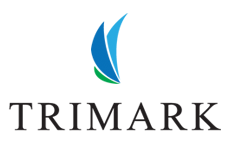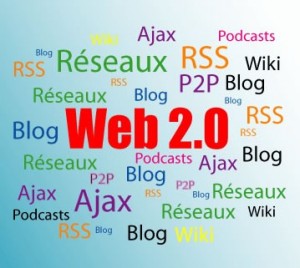Web Terms and Definitions
We have been asked many times during meetings with clients to explain more in details about the web terms we use in the industry. So i have decided to post common web terms with definitions in to our blog so we can have you all check it out anytime you may have questions or if you are not sure of the terminology what it means.
And if we have missed anything, please feel free to ask us in the comments portion and we will be more then happy to add in to the article for future readers.
.
.
Web Terms
—————————————————————————————————————————————————–
Analytics:
Software that monitors every website visitorʼs actions and saves that information to be organized and utilized for decision making.
Black Hat SEO:
Describes unacceptable and unethical methods of improving website rankings on search engines. Any misrepresentation of your website to search engines is usually considered to be “black hat”.
Bot:
An automated program that reads the text and hidden coding on websites. The information is then stored in a database oture reference. The rankings of websites on search engines are determined by relevance, which is based on the information gathered by the bot. Also known as a spider, crawler or robot.
Bounce Rate:
The percentage of visitors who only view one page of a website before exiting.
Cache:
Refers to a collection of previously visited web pages that is saved on your computer as “cookies”. This saved data helps speed up loading times for future visits to the same web pages. If changes are made to a web page after caching, those changes may not be displayed on your cached version of the page until the page is refreshed.
Click-Through Rate (CTR):
The ratio of clicks to impressions (displayed ads) expressed as a percentage.
Content Network:
An advertising network comprised of non-Search Engine websites. Practically any website can be included in this network if they allow advertising. Ads are displayed based on the context of the information available or the behavior of visitors. There are thousands of websites involved in different networks, depending on the advertising platform.
Cost Per Click (CPC):
A bidding system for paid advertising; the maximum amount one is willing to pay for a click. Advertisers are only charged when a user clicks an ad.
Cost Per Thousand Impressions (CPM):
A bidding system for paid advertising; the maximum amount one is willing to pay for 1,000 impressions. The number of clicks does not affect cost.
Direct Navigation:
Accessing a website by typing the website address directly into your internet browser.
Domain:
A websiteʼs internet address; i.e. www.trimarkfirm.com
Goal:
Used in reference to analytical tracking of completed actions on a website. A goal can be anything from simply viewing a particular web page, to signing up to receive a newsletter. For Window World, a goal is normally defined as a completed contact form requesting a demonstration. Goals are also known as conversions. For Window World, a goal may also be referred to as a demo request, a set appointment, or a lead.
Hyperlink:
Also referred to as a “Link”. Includes text based links or images that can be clicked to take you to another webpage on the internet. This includes back links (inbound links), outbound links and internal links.
Impression:
Any time an internet listing (paid or free) is displayed on a userʼs computer screen.
Index:
The database of a search engine or directory. Used to save information for retrieval.
IP (Internet Protocol) Address:
A unique identification number for each system (computer or network) connecting to the internet. It can be used to determine geographic location of users, among other things.
Link Building:
The process of creating an infrastructure of hyperlinks/links for your website; allowing you to link to pages within your own site, link out to other sites, and allow other websites to link to you. The most important aspect of link building is acquiring links from other websites that point back to your site (“inbound links” or “back links”). An inbound link is interpreted as a vote of confidence by search engines and a website with more high quality, inbound links will usually show up higher in search rankings.
Local Business Listing:
A free listing on search engines showing the physical location of your business on a map along with other information such as phone numbers, websites, and services. These listings appear when a search query includes a geographic term to specify location. For listings/businesses within your local area, no geographic search term is needed to display a local listing. Rankings are determined automatically by computer algorithms and search engine marketers have minimal control over placement.
Meta Data:
Includes the description and keywords associated with each webpage. These are determined by whoever cre- ates a website and usually relate closely to what is displayed on the page. This information is not visible on the webpage itself, but hidden in the source code.
Organic Search Results:
Also referred to as “natural” or “algorithmic” search results. Includes all non-paid search results or listings displayed on search engines. Organic search results are determined by computer algorithms that assign a position/ranking based on the quality of a website and its relevance to users.
Page Views:
Refers to the number of times a web page is viewed on a website. Each time a web page is accessed by an internet user, a page view is counted in the websiteʼs analytical records.
Pay Per Click Advertising (PPC):
Also referred to as “Paid Search Marketing”. An ad campaign that applies bids to particular keywords phrases and shows certain advertisements based on the keywords searched. These keywords compete in a real-time auction with competitorsʼ selected keywords. Ranking and placement of ads is determined by a combination of the relevance of targeted keywords and the highest bid. The highest bidder is not always listed first if they manage low quality/irrelevant campaigns. Learn more.
Referring Sites:
Any website that sends visitors to another website via hyperlinks.
Refresh:
A function used to eliminate all cached versions of a web page from your computer. The web page will then be displayed with the most up-to-date information. To perform a “hard refresh” hold Ctrl and F5 at the same time. This will show all recent updates to the web page.
Search Engine Optimization (SEO):
The process of creating/maintaining websites that contain highly relevant content for searchers, as well as highly valued inbound links. These are the two most important factors, but there are many other elements involved with SEO. The purpose is to attain the highest website rankings possible for targeted keywords/search queries on search engines. Also generally referred to as “Search Engine Marketing/Management (SEM)”. Learn more.
SERP:
Also known as a “Search Engine Results Page”. The resulting list of web pages provided by search engines after a search is performed. This includes every listing shown in the results, including paid and non-paid listings.
Search Network:
An advertising network comprised of Search Engine websites. Advertisements displayed on these sites are determined solely by a userʼs search query. There are dozens of popular search engines involved in different search networks; a result of acquisitions and mergers.
Server:
Any computer that stores information about a website and delivers it to other computers upon request. The text, graphics and multimedia visible on a website are delivered to computers using servers.
URL (Uniform Resource Locator):
Another name for a website address; i.e. www.google.com.
Web 2.0:
The second generation of internet based services involving collaboration, communication and sharing among many users; i.e. Social networking websites.
White Hat SEO:
Describes commonly accepted and ethical methods of improving website rankings on search engines.
Hosting:
Hosting simply refers to where does your web site get delivered or run from. For a web site to exist and be accessible to the world, it must be on a web server. That web server must be always connected to the internet and running so that your website is available to anyone at any time around the world. Hosting is just who or what machine is going to be doing that for your site. Most site operators choose to let a hosting company do this for them. These companies go by a few different names such as web host, or ISP (Internet Service Provider).
Domain Forwarding:
URL redirection, also called URL forwarding and the very similar technique domain redirection also called domain forwarding, are techniques on the World Wide Web for making a web page available under many URLs. i.e. when you type in www.trimarkadvertising.com, it forwards it to www.trimarkfirm.com and you end up landing in www.trimarkfirm.com.

